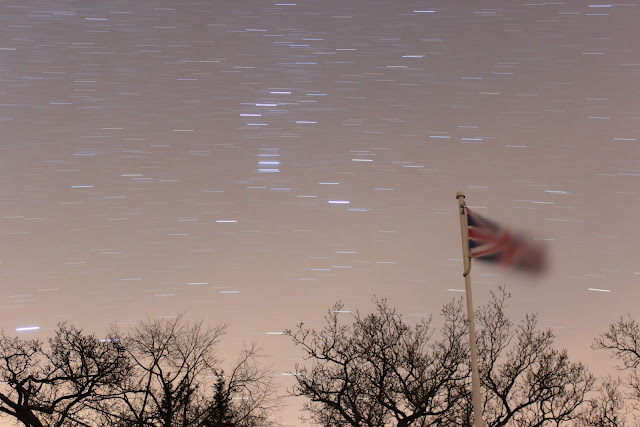Experienced enthusiasts often use a proper HAM radio receiver to listen to payloads. These are robust pieces of kit and are really the correct tool for the job, however there is usually a large (£100+) cost for even the most basic second hand receiver. I know that we could have bought one and sold it on again afterwards, but for our first launch it was just too much of an outlay at the beginning. This almost jeopardised the whole project before we even began - if we couldn't track the balloon then there wouldn't be much point in launching.
 |
Inside the dongle.
Soldered 5v header from usb to the HABAmp. |
In the first few days after deciding to start the project, we had read
this on the UKHAS wiki page. It detailed how in theory you could use particular USB dongles that were originally designed to fit into your PC and receive a TV aerial and signal to instead, receive signals that were usually outside of TV frequency range. Once you could receive the signal, you could then use software to listen to it and pass it on to whatever other software you like. This was much more within our initial budget so we went for this option to see how well it would work out.
 |
| HABAMP |
The answer is, very well. I bought the dongle and highly recommended 'HABAmp' from the
HABSupplies store. From my experience now, you definitely need the HABAmp for this to work successfully. When testing without the amp, we were losing signal almost instantly when moving away from the tracker. The amp does need its own 5v supply which I took from the USB header inside the dongle.
 |
Testing using SDRSharp and the dongle before
adding the amp with my router aerial. |
Following the wiki page was straightforward and I installed the drivers and software with no issues. One thing to note about that page is that we didn't need to download Virtual Audio Cable or similar software, I just configured the Windows Vista/7/8 "What U Hear" functionality. Something that I had to consider was the fact that I wasn't able to be fully sure that everything was working until the tracker was giving out a signal. This was difficult at first, but when I was reasonably confident in the receiver, I started on the tracker until I got to a point that I could test both. Not the most scientific approach but it was all I had! Initially I had no antenna to test with, so before doing any research I just grabbed my router aerial as I could see it had the same SMA plug on the end - this didn't really work. Learn from this mistake and buy or make yourself a proper antenna from the outset!
Once I was happy that all was working I needed an enclosure to put it in - the chinese takeaway box I was using just did not cut it for professionalism anymore, so instead I commandeered a new toothpaste tube box! This was a perfect fit and gave a smart look to what is essentially a USB dongle and another circuit board in a toothpaste box covered in tape!
Antenna

I cannot stress enough how much you need a decent antenna for this to work. After talking to a few guys on the #HighAltitude channel on freenode IRC, I went for
this half wave antenna from
http://www.hamradio.co.uk/. Half wave means exactly what it sounds like, the length of this antenna is exactly half the length of the whole wavelength that I am looking to receive.
I had the chance to test this from a room in our house, tracking another enthusiasts' balloon from 50 miles away! Was a great feeling knowing that everything was working.























